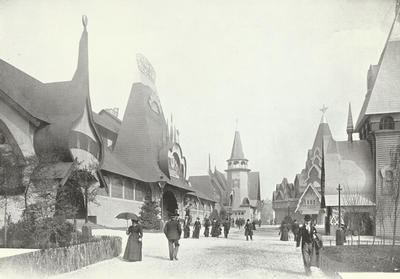
The largest foreign exhibit at the International Exhibition of 1901 was the Russian Village, which attracted a great deal of attention. The brightly coloured art nouveau buildings, designed by Fyodor Shektel, reminded some of the "Glasgow School" of design. Agriculture, forestry and mining featured prominently in the various pavilions. It was felt that the large area occupied by the six Russian buildings gave the Exhibition a truly international dimension.
Almost as big an attraction as the Russian Village were the 180 Russian carpenters who built it. Smoking and singing as they worked (when not on strike), they proceeded at a leisurely pace, entertaining the spectators. The eventual opening of the village, six weeks after the rest of the Exhibition, brought renewed interest in the event.
Reference: Mitchell Library, GC f606.4 (1901)
Reproduced with the permission of Glasgow City Council, Libraries and Archives
Keywords:
art nouveau, carpenters, exhibitions, Glasgow School, International Exhibition, 1901, Russian Village, strikes
You have 0 images in your photo album.